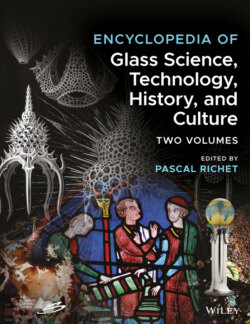Читать книгу Encyclopedia of Glass Science, Technology, History, and Culture - Группа авторов - Страница 218
6 Perspectives
ОглавлениеThis review of microstructural techniques is not comprehensive. In addition to the variety of spectroscopy techniques such as IR, Raman, XPS, or micro‐X‐ray fluorescence (Chapters 2.2 and 5.1), which also possess certain spatial‐resolution capabilities, electron backscatter diffraction, transmission Kikuchi diffraction for texture analyses, or time‐of‐flight secondary ion mass spectrometry can also be used to investigate the property–structure relationships in glass‐based materials down to a sub‐nanometer scale. Because an important feature shared by all of these techniques is their ever‐improving resolution and analytical precision, one can expect a better understanding of the way in which valuable mechanical, thermal, optical, or electronic properties are achieved in inhomogeneous materials. Conversely, these observations should help to design and tailor new materials for specific applications. Of particular interest is a better understanding of crystallization processes, whereby the nucleating phases not only differ generally in chemical composition from the starting glass but can be nonstoichiometric and highly disordered. In this respect, more detailed observations thus should serve as a basis for theoretical investigations in the fascinating field of the coordination and valence changes that are taking place during microstructure evolution. And one can even expect that further instrumental advances will make it possible to check material properties online during glass and glass‐ceramic fabrication and figure out at once causes for production failure, such as surface devitrification.
